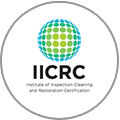Did you know that fixing water damage in a U.S. home can cost about $2,700? But, it can go over $10,000 for really bad cases. Flooding, from natural disasters or burst pipes, can cause big problems inside your home. It’s important to remove moisture quickly to fix flood damage.
After a flood, you face not just physical damage but also a race against time. You need to get rid of dampness and stop mold before it starts. This means using tools like dehumidifiers and improving air flow and heating in your home.
Acting fast in the first 48 hours is key. It helps lessen damage and increases the chance of saving your stuff.
Key Takeaways
- Cost of water damage restoration can range from $2,700 to over $10,000.
- Swift moisture removal is essential for effective flood recovery.
- Methods include using dehumidifiers, fans, and portable heaters.
- Open doors and windows to increase ventilation and speed up drying.
- Quick action within the first 48 hours can reduce damage and prevent mold growth.
Initial Steps After Flooding
After a flood, it’s vital to act fast for safety. First, turn off the electricity to prevent accidents and avoid touching contaminated water. These actions keep you and others safe during the emergency response.
Start by documenting the damage with photos or videos. This is crucial for insurance claims. For small floods, use buckets for removal. But for bigger areas, wet/dry vacuums work best.
Good ventilation helps lower humidity and dry out the area. Open doors and windows to let in fresh air. Throw away items that can’t be cleaned, like mattresses and carpeting, to prevent health risks.
Clean hard surfaces with detergent and hot water, as advised by the CDC. This keeps your home safe and healthy after the flood. These steps are key to a successful recovery.
Removing Standing Water Efficiently
Removing standing water quickly is key to reducing flood damage. For small floods, using buckets to scoop out the water works well. But for big floods, wet vacuuming is better. It helps remove water from floors and rugs fast.
For really big floods, you need submersible pumps. These pumps can move a lot of water quickly. This is important for drying out areas fast and preventing damage.
Using flood recovery tools like wet/dry vacuums and submersible pumps makes removing water quick and complete. This makes it easier to move on to the next steps in fixing flood damage.
Employing Drying Methods and Tools
After removing the water, drying is key to stop mold and damage. Using high-powered fans and air conditioning helps move air and get rid of moisture. Dehumidifiers are also vital for drying out the air.
Dehumidifiers with regenerative heat exchangers and strong fans work well. They dry out the air faster than regular units. This helps keep buildings strong and the air clean. Good air flow helps dry things out quickly.
Raising the room’s temperature helps dry walls and floors faster. Portable heaters can speed up this process. Using these drying methods cuts down mold and damage risks. It makes the place safer and healthier after a flood.
How do you get moisture out of a house after a flood?
Getting moisture out of a flooded house is a big job. It starts with removing all standing water using tools like sump pumps or wet/dry vacuums.
For full recovery, it’s important to improve air flow with fans. Dehumidifiers also play a key role in reducing humidity. This helps prevent mold.
It’s crucial to move items out to dry them properly. Using desiccants to soak up moisture is another good step. Keeping an eye on humidity levels ensures all moisture is gone, reducing mold risk.
For items like documents and photos, special care is needed. Freeze-drying can save these items from further damage.
Every step is important for a complete recovery from flood damage. It protects the home and its contents.
Conclusion
Dealing with flood damage is tough and involves many steps. First, it’s key to remove standing water quickly. This helps stop more damage and keeps people safe. Using pumps and wet vacuums, along with drying methods, is crucial in the first 48 hours.
Keeping your home’s structure safe is also vital. Drying it out and improving air quality with dehumidifiers helps stop mold and keeps the home as it was. Homeowners must watch the temperature and humidity levels to make sure the space is safe.
Quick, smart actions are key to recovering from a flood. Homeowners play a big role in fixing their homes. But, if the damage is big, getting help from professionals is a good idea. Their help ensures a safe place to live, protecting your home and health.






